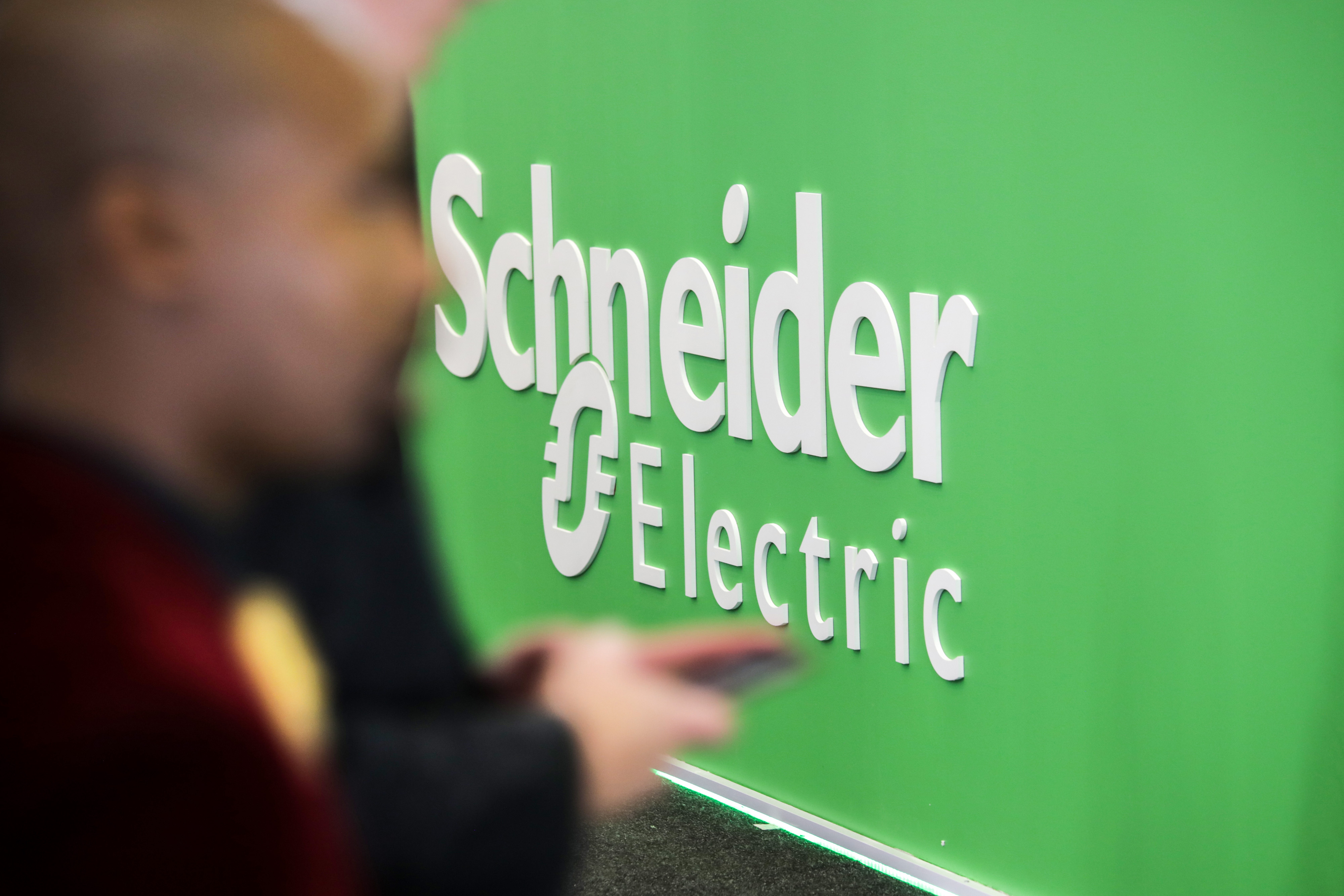How will energy prices affect data center costs in 2024 and beyond?
Under pressure to improve their sustainability credentials and offer cost-effective services, data centers are at the forefront of managing the cost of energy


Data centers are the backbone of the digital age, powering the exchange of information that fuels economies and societies worldwide. Yet, behind the seamless data flow lies a complex ecosystem deeply intertwined with the fluctuating currents of energy markets.
In 2024, businesses the world over are aware of how volatile energy prices can be, having endured years of peaks and troughs linked to global conflict and supply chain shortages. At the same time, many businesses are rushing to adopt energy-intensive technologies such as generative AI, with the past few years of innovation in the space having lit a fire under leaders to unlock the business benefits of AI.
The potentially huge energy cost associated with AI is a fact that IT leaders and data center operators must address, in line with cost and sustainability requirements. As businesses shift into high gear with their deployment of AI tools, what does this mean for data centers tasked with delivering these services cost-effectively and via sustainable operations?
"Generally, our research has shown the electricity outlook for this year is positive, far better than it was during the energy crisis in late 2022/2023," Adam Nethersole, VP of Kao Data, tells ITPro.
"For context, electricity prices have reduced considerably since this time last year, from over $443/MWh (£350/MWh) to around $139/MWh (£110/MWh) and below today. Looking forward, forecasting against potentially volatile fluctuations in energy pricing, and having a flexible purchasing strategy is a vital part of any data center's financial and operational planning."
From the increased use of renewable energy to create green data centers to the evolving geopolitical dynamics influencing fossil fuel markets, there are manifold forces at play that carry profound implications for data center operators and stakeholders.
Data center operators face rising costs and emissions
The statistics are stark: Microsoft's Bing chatbot is reported to have cost $4 billion in infrastructure costs alone and companies such as OpenAI could become money pits for investors.
Get the ITPro daily newsletter
Sign up today and you will receive a free copy of our Future Focus 2025 report - the leading guidance on AI, cybersecurity and other IT challenges as per 700+ senior executives
Data centers also account for 0.6% of global greenhouse gas emissions, according to figures from the International Energy Agency. Add unstable energy costs to the equation and it’s clear businesses and their suppliers have several challenges to overcome if they are to leverage data center services in a cost-effective way as they move forward with their AI strategy.
"Energy prices have continued to adjust down following the energy crisis caused by the war in Ukraine,” explains Chris Pennington, director of energy and sustainability for Iron Mountain in conversation with ITPro.
“Europe now gets more power from clean energy sources than it does from Russia-supplied fuel, and wind supplied more energy than natural gas. Continued pursuit of additional clean energy sources coupled with the expansion of grid-connected energy storage and carbon capture technology will deliver not only energy security but progress towards our collective need to decarbonize."
At the heart of this discussion lies the imperative of sustainability. With environmental concerns taking center stage on the global agenda, data center operators face mounting pressure to mitigate their carbon footprint and embrace greener, more sustainable practices.
Customers in a position to are already migrating workloads to regions like Iceland, which has a 100% renewable grid. This allows firms to harness huge savings and meet sustainability goals at the same time, as its plentiful geothermal and tidal energy has driven average energy costs down to as little as $42/MWh (£33/MWh).
The shift towards renewable energy sources, coupled with advancements in energy-efficient technologies, presents both a challenge and an opportunity for data center operators striving to balance environmental stewardship with the operational demands of their customers.
Data center energy efficiency is a complex picture
Data centers have been power hogs since their inception and operators have focused on energy efficiency as a primary lever to distance data center costs from the price of energy on the global markets. Even so, with energy requirements on an upward curve data centers will account for more and more of the overall global power demand this decade.
The International Energy Agency (IEA) estimates that data centers accounted for around 1-1.3% of global energy demand in 2022, but notes that annual global data center energy consumption has risen between 20-40% for some years and is expected to continue on this path in the short-to-medium term.
How this power is generated has come under close scrutiny as businesses look to demonstrate their ESG credentials to their customers and commercial partners. But with energy costs being more volatile than ever, remaining innovative, and embracing new technologies while remaining sustainable is a significant challenge for today's data centers.
Hyperscalers are making practical decisions to remain market leaders and deliver the services their customers demand, without missing climate targets. Witness, for example, announcements from AWS and Google that they will take over half (573 MW) of the entire power generated (882 MW) by the Moray West offshore wind farm in Scotland. Amazon has claimed to be the largest buyer of renewable energy via PPAs (Power Purchase Agreements) and deals such as this cement an image of matching increasing energy demand with 100% clean energy generation.
In May 2024, Microsoft signed a record renewable energy agreement covering 10.5 GW of energy-generating plants across the US and Europe worth $10 billion. While Microsoft Azure has set a target to be 100% powered by renewables by 2025, this investment only applies to projects coming online between 2026 and 2030 – in time to meet surging data demands.
Some, however, are skeptical about these claims. For example, Princeton University's ZERO Lab released a study that concluded that large renewable energy purchases may need to be more transparent and environmentally advantageous. Amid greater scrutiny over data center energy use, organizations must present a clear picture of the emissions their operations result in, or else be accused of greenwashing.
Nvidia has recently argued that new metrics for data center efficiency are needed. The current standard, power usage effectiveness (PUE), measures the energy efficiency of the data center itself but doesn’t assess the usefulness of the data center’s workloads. The firm has suggested that for AI processes, users might be better served with a metric that simply explains the ratio between each kWH of energy used to power the data center and what it’s being used to accomplish.
Can the grid support cheaper data center infrastructure?
As power needs continue to expand significantly within the data center sector, energy security and flexible energy capacity are coming into sharp focus for all service providers. McKinsey points to a lack of dispatchable power as a critical issue as the gap between peak electrical loads and loads that can be switched on when needed is widening. Renewable energy sources, multi-scale batteries, biomass, nuclear, and hydrogen are all in the mix to close this gap.
Roman Khavronenko, co-founder and engineer at VictoriaMetrics points to power delivery as an essential component for the future of data center energy in the UK:
"There are definitely elements of the National Grid that are already struggling from the demands of rooftop solar and similar technologies.
“The decentralization of power delivery is creating more demand for bidirectional power draw. These challenges are not new and the grid is constantly evolving. Commercial businesses already pay unsubsidized rates for electricity (in most sectors), so the mechanisms of supply and demand should deal with new power delivery over the medium to long term."
Corey Needles, MD of Northern Data Group's Data Center division, Ardent Data Centers emphasizes the wide-scale grid overhaul that will be needed to support data center growth.
"With data center power demands projected to reach 35GW by 2030, a fundamental change in power infrastructure will be essential," he says. "This transformation will likely involve both public and private investment, with costs potentially shared between governments, utility companies, and data center operators. The focus will be on upgrading grid capacity, integrating renewable energy sources, and enhancing energy storage solutions."
The cost of energy for data centers going forward
By embracing a holistic approach to energy management that integrates renewable energy, energy storage, demand response, and energy-efficient technologies, data centers can enhance their resilience, reduce environmental impact, and optimize operational costs, all practical actions against a backdrop of energy prices.
For Jason Koffler, CEO of Critical Power Supplies, collaboration could be a way forward: "There could be an answer – for data centers at least – joining buying power”.
“So, if you're a five MW data center, joining the buying power of the five GW data center group could drive cost efficiencies for a fixed period of time. That requires a certain mindset, a lot of calculation, and even more risk assessment, but that's one-way data centers could respond to energy market uncertainties. But, as with anything, it's whether or not there's the will to. If there's a will, there's usually a way."
Needles adds that energy prices and the broader environmental commitments of data centers should usher in a new age of energy sustainability.
RELATED WHITEPAPER

"The data center industry faces the dual challenge of meeting the rapidly growing demand for data processing and storage while also reducing its environmental footprint. The shift towards sustainability, driven by technology advancements, regulatory requirements, and market demand, presents an opportunity for the industry to innovate and lead in the green transition. Collaboration across sectors, along with supportive policy frameworks, will be crucial in achieving these goals."
This year shows some signs of the volatility in the energy market subsiding. For data centers tasked with delivering cost-effective, sustainable services to their customers they must adapt to the energy market conditions they find themselves working within. The volatility inherent in energy markets poses a significant risk factor for data center economics. Fluctuations in energy prices, whether driven by geopolitical tensions, supply chain disruptions, or regulatory shifts, can exert profound impacts on operational costs and profitability.
David Howell is a freelance writer, journalist, broadcaster and content creator helping enterprises communicate.
Focussing on business and technology, he has a particular interest in how enterprises are using technology to connect with their customers using AI, VR and mobile innovation.
His work over the past 30 years has appeared in the national press and a diverse range of business and technology publications. You can follow David on LinkedIn.
-
 The Race Is On for Higher Ed to Adapt: Equity in Hyflex Learning
The Race Is On for Higher Ed to Adapt: Equity in Hyflex LearningBy ITPro
-
 Google faces 'first of its kind' class action for search ads overcharging in UK
Google faces 'first of its kind' class action for search ads overcharging in UKNews Google faces a "first of its kind" £5 billion lawsuit in the UK over accusations it has a monopoly in digital advertising that allows it to overcharge customers.
By Nicole Kobie